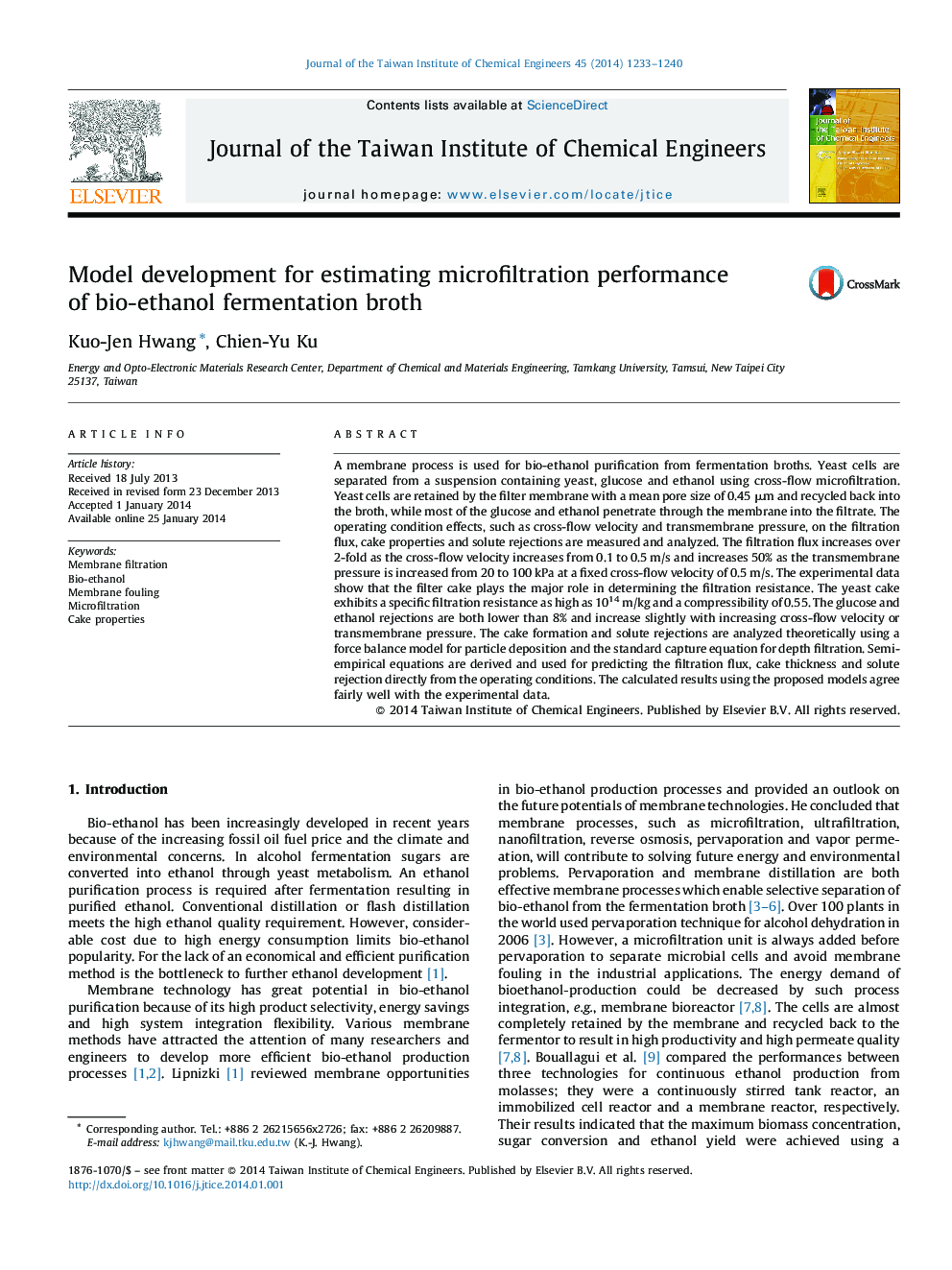| کد مقاله | کد نشریه | سال انتشار | مقاله انگلیسی | نسخه تمام متن |
|---|---|---|---|---|
| 690876 | 1460431 | 2014 | 8 صفحه PDF | دانلود رایگان |
• Yeast cells were completely retained and recovered using microfiltration.
• Both glucose and ethanol rejections were lower than 8%.
• The yeast cake exhibited a specific filtration resistance as high as 1014 m/kg.
• The cake thickness was thin and ranged from 20 to 73 μm.
• Models were derived for predicting filtration flux and solute rejection.
A membrane process is used for bio-ethanol purification from fermentation broths. Yeast cells are separated from a suspension containing yeast, glucose and ethanol using cross-flow microfiltration. Yeast cells are retained by the filter membrane with a mean pore size of 0.45 μm and recycled back into the broth, while most of the glucose and ethanol penetrate through the membrane into the filtrate. The operating condition effects, such as cross-flow velocity and transmembrane pressure, on the filtration flux, cake properties and solute rejections are measured and analyzed. The filtration flux increases over 2-fold as the cross-flow velocity increases from 0.1 to 0.5 m/s and increases 50% as the transmembrane pressure is increased from 20 to 100 kPa at a fixed cross-flow velocity of 0.5 m/s. The experimental data show that the filter cake plays the major role in determining the filtration resistance. The yeast cake exhibits a specific filtration resistance as high as 1014 m/kg and a compressibility of 0.55. The glucose and ethanol rejections are both lower than 8% and increase slightly with increasing cross-flow velocity or transmembrane pressure. The cake formation and solute rejections are analyzed theoretically using a force balance model for particle deposition and the standard capture equation for depth filtration. Semi-empirical equations are derived and used for predicting the filtration flux, cake thickness and solute rejection directly from the operating conditions. The calculated results using the proposed models agree fairly well with the experimental data.
Journal: Journal of the Taiwan Institute of Chemical Engineers - Volume 45, Issue 4, July 2014, Pages 1233–1240
